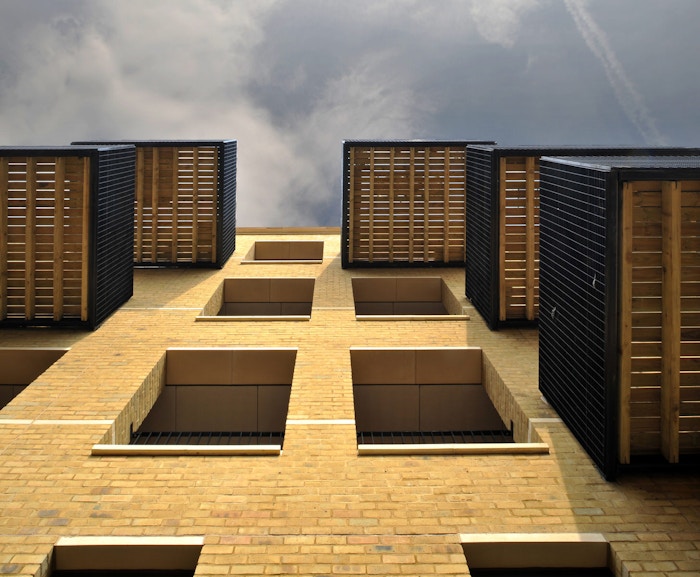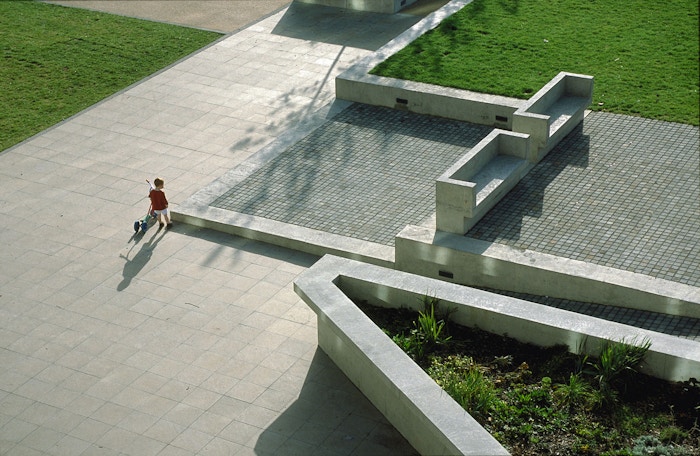—
new mixed tenure homes as part of an existing housing estate

The strategy for this project has been to create a legible, human scaled urban block enclosing a shared garden, with residential accommodation, retail uses and community facilities arranged around the perimeter facing onto the surrounding streets.



The scheme, which integrates an existing twenty-storey residential block on the edge of the Silchester Estate, provides family homes for social rent alongside shared ownership and apartments for sale.



The new urban block reinforces the character of existing residential street patterns, animating corners with community spaces and retail, and creating a new mews alongside the existing railway arches that support the elevated Circle and Hammersmith and City lines. The arches under the railway line are due to be brought into new use as workspaces and shops.

The qualities of Peabody’s existing nineteenth century housing estates, along with the terrace house typology, are the reference points for the choice of materials and details. Two types of brick are used, predominantly a rich buff with lighter “gault” bricks where the blocks are set back at higher levels.



Openings have a vertical emphasis, with regular repeated proportions creating the subtle horizontal and vertical rhythms characteristic of traditional London housing.


All the homes are dual aspect to give good levels of daylight and natural cross ventilation. Large external balconies are either recessed on the street frontages or project over the communal garden within.

Private terraces for the ground floor family homes provide a buffer between the private residences and the shared garden. Designed as an open green space to look onto and move freely within, the garden is available to all residents of the scheme and natural play opportunities have been integrated within the landscape.



Generous daylit communal entrances connect to the garden and provide lift and stair access to upper levels.



The scheme at Silchester will achieve code for sustainable homes level 4 across all tenures, and will also provide solar energy collectors and green and brown roofs to mitigate the environmental impact of the development.

Glasgow-based visual artist Nathan Coley was commissioned to make new artwork for the site. His large steel and gold leaf rooftop sculpture references the forms of an apple tree, referring to the Bramley that gave its name to a group of squatter residents on the site in the 1970s.



Nathan made 112 smaller versions of the sculpture as a house warming present to each of the new homes.

“Haworth Tompkins have designed an exemplary residential project on a very challenging site; sensitively engaging with the existing context of the estate and improving the adjacent public realm.” Judges Citation, RIBA National Awards















